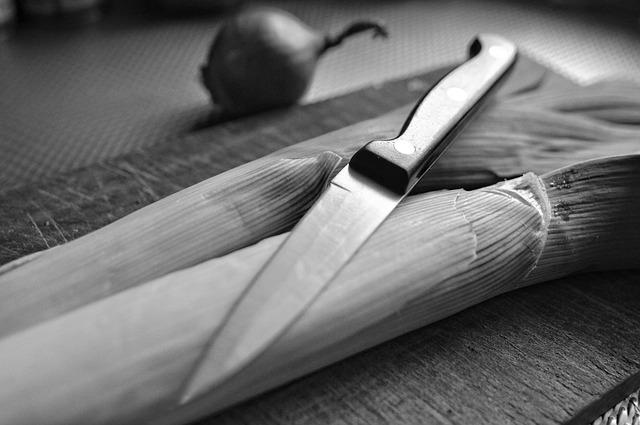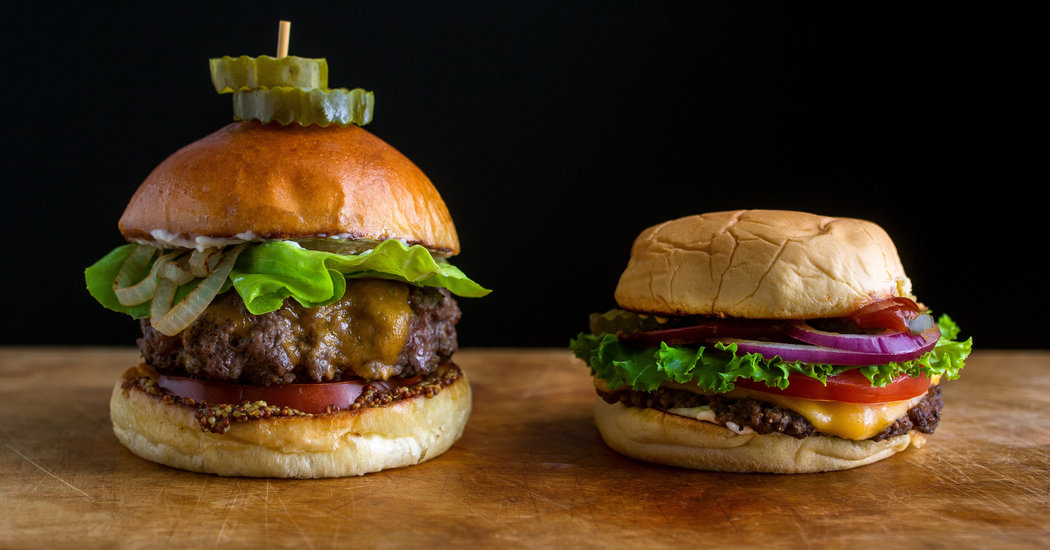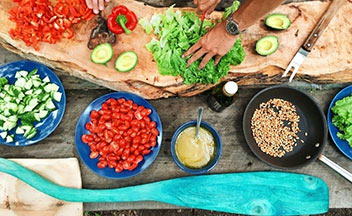
Cast iron skillets that have begun to warp should be identified. These are Thermal expansion (Sharp flash), and reseasoning. You'll find out how to avoid them in this article. Here are some simple solutions to the problem of your skillet warping. Below are some of the most common causes. This article also covers Sharp flash and Reseasoning.
Thermal expansion
Cast iron is susceptible to warping, a problem caused by sudden changes in temperature. The cast iron's core expands when temperature changes rapidly, but the outer layer stays the same. Extreme temperature changes like immersion in cold or sudden drops in temperature can cause cast iron to crack and warp. This is known as thermal shock. Fortunately, there are some preventative measures to take, such as carefully heating your cast iron pan before using it.
Before you cook with high heat, it is important to let your meat cool off before placing in the pan. This will reduce the temperature difference between the meat and the saucepan. The mismatch of pan sizes is another reason for warping. For example, if you place a large pan on a small burner, only the center is in contact with the heat, the central area will expand faster than the rest of the pan.

Sharp flash
Cast iron cookware will have seen this problem. The sudden temperature fluctuations can cause a sharp flash. The hot central part of a pan expands but the cool middle doesn't. This causes iron to warp, and puts stress on it. Most flashes are removed during the finishing stage. Some can stay inside the handle. Flashing is not an indication of poor quality and will not affect cooking.
If cast iron cookware begins warping, you can tell by the shape and color of the pan. This is often seen on the bottom. It is more likely to occur in long and flat castings. To avoid this, find a curving shape at the thickest part the wall. Uneven cooking can be caused by warped pans that allow liquid to pool in their middle. If you notice any of these signs, try placing the pan on a flat surface. If your pan appears warped, this is a sign that the pan has been damaged. However, it can still be used in an oven or on a gas stove burner. The item's collectible worth will be reduced if it is damaged too severely.
Re-seasoning
A quick and easy way to reseason your cast iron skillet is to place ice cubes in the warped area. Then, run a little coldwater over it. The ice will help to flatten the warped areas and the water will cool them down. The warping process is caused by differences in the temperature of the cast-iron pan and the temperature of the water.

Cast-iron that has been seasoned will make it strong and resistive to warping. It will help prevent your pans from warping because they won't be as vulnerable to rust as unseasoned cast iron. Preheat your pan to 200 degrees Fahrenheit. Once the pan is hot, you should be able to see small amounts of oil in the low parts. Once oil has accumulated, heat the pan at 350 degrees F for one hour. Bake for an additional hour at 450°F.
FAQ
Do I have to buy ingredients in order to cook?
You don't have to buy all ingredients. You can buy premade sauces or other items at most grocery stores. Pre-made meals are a great way to save money.
What should a novice cook do first?
A beginner should start cooking something easy, like pasta, rice, or soup. If you want to learn how to cook, go for a recipe book or YouTube video. Cooking is fun when you do it with someone else. Try cooking together as a family, or have friends share the experience.
Do I have to go to culinary school in order to be a professional chef?
No. No. Many chefs began their careers learning by themselves. Some even went to culinary schools to gain practical experience. Culinary school is preferred by most chefs because they have more opportunities to grow and learn. Culinary schools allow students to learn hands-on skills, and this helps them improve their cooking knowledge.
Can I learn to cook with my kids?
Yes! Yes! It's an enjoyable activity that teaches responsibility and teamwork. You can have your children help you with everything, from washing vegetables to cutting onions. They will enjoy helping you to cook if your children are safe with knives.
What skills are required to enter a culinary school?
You will need to know how to cook, understand food safety regulations, and be able work under pressure in order to become a chef. For a basic understanding of cooking, it is advisable to enroll in cooking classes at the local high schools or community colleges. Once you have learned the basics of cooking, it is time to look for work at a restaurant.
How long does cooking take? How long will it take me to learn how?
It all depends on your skill level. Some people can learn basic cooking techniques in as little as a week. Others might take months or years before they feel confident enough to teach themselves how to cook.
There are many factors that affect the time required to learn how cook. For example, someone who has never cooked before would probably need more time than someone who cooks regularly. Certain types of cooking require more skill than others. Baking requires more knowledge than frying.
If you want to learn how quickly you can cook, you should focus on learning a specific technique. After mastering one technique, you can move on to the next. It doesn't matter how long it takes to master a particular technique. Just keep practicing and enjoy the process.
Statistics
- The median pay for a chef or head cook is $53,380 per year or $25.66/hour, according to the U.S. Bureau of Labor Statistics (BLS). (learnhowtobecome.org)
- You'll be amazed that over 90% of CIA students receive scholarships and grants to finish their culinary studies. (ischoolconnect.com)
- under 10 Kids have been taught that there is special food just for them, and Fiese says that 10 percent of kids will throw a tantrum if they don't get the food they want. (washingtonpost.com)
External Links
How To
How to make a perfect Omelette
Omelets are my favorite breakfast dish. How can you make them perfectly? Many different recipes and methods have failed to work for me. So I wanted to share some tips and tricks so that you can make delicious, fluffy omelets every morn.
It is important to know that eggs can be temperamental when making omelets. You must get them fresh, organically, and keep them cold until you cook. The yolks and whites will not form properly if they aren't kept cold enough. This will make your omelets appear strangely colored. If you want to make omelets right away, it's best not to use eggs that are too cold.
You can also separate the egg before you add it to the pan. You don't want the white to get mixed with the yolk, as this could cause the egg to curdle.
The bottom part of an egg that is added directly to the stovetop might be burned, which could cause a ruined texture in your omelet. Instead, heat the egg for 10 seconds in the microwave before placing it in the pan. The microwave heat will cook the egg just right without making it too hot.
Next, let’s talk about mixing the egg. Mix eggs well together. You can do this by turning the bowl of your mixer upside down. Next, shake the bowl vigorously. This way, the air inside the bowl gets whipped around and mixes the egg thoroughly.
Now it's time to have fun: pour the milk into the mixture. First, pour half of the milk into the beaten eggs and then fold the eggs gently into the remaining milk. Don't worry if there are still streaks of egg visible; these streaks will disappear once you flip the omelet.
After you have done folding the eggs, heat the pan on medium heat. The oil will start to smoke. Once the oil has gotten hot, add 1/4 cup of butter and swirl it around so that the entire pan is coated. Carefully open the pan's lid and add salt to the pan. The salt will help to prevent the omelet's sticking to the pan.
Once the omelet forms, cover the pan again. Let the top side set completely. Flip the omelet upside down or with a spatula. Cook the opposite side for another minute. Serve immediately after removing the omelet from its pan.
This recipe is best when used with whole milk. But, you can use skimmed milk as well.